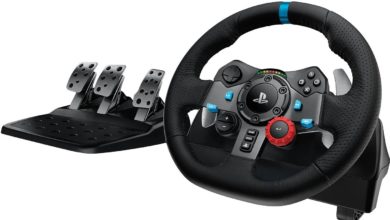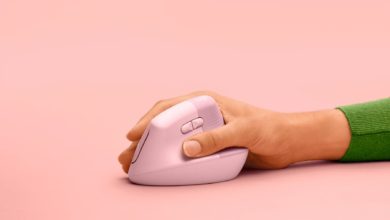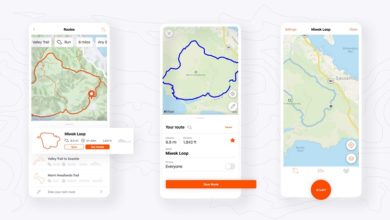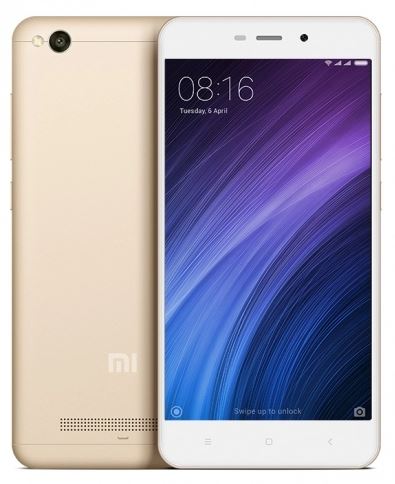Know your smartphone manufacturer part 2
Hope you have liked the article on Motorola. This time, you get to learn about a brand that is going to celebrate 150 years in 2015. Yes, 150 years! They have not invented mobile but they gave us smartphone, they used to create devices that used to be at the center of attention in the 90’s and till late 2000s. I think you know what I am talking about. PS: The first article on Motorola was huge and this time, I have decided to make it a bit easy to read and as short as possible. Happy reading. 12 May 1865 Fredrik Idestam, father of Finland’s paper industry was granted permission to build a paper mill and the mill construction was completed on the banks of Tammerkoski Rapids in Tampere, Finland in the year 1866. In the year 1868, he build another mill by the banks of the Nokianvirta river. Unlike today’s paper that is manufactured from wood pulp, till late 1860s, Europe used to manufacture paper using rag pulp (mix of linen and canvas rags, cotton rags were added later) which was expensive when compared to wood pulp. While Friedrich Gottlob Keller invented this method of manufacturing paper from wood pulp in 1844, it was Heinrich Voelter and Idestam were instrumental in bringing this manufacturing process to mass use. In the year 1867, Idestam was awarded a bronze medal for showcasing his groundwood while Voelter’s mill got the gold medal and this was the catalyst that they needed to increase usage of wood pulp based paper. 1871, Nokia Ab With his friend Leo Mechelin, in the year 1971, Idestam founded Nokia Ab and moved to a small town named Nokia, 15kms west of Tampere where he built a new mill. At the time of startup, Idestam owned more than 50% of shares. He had to resign from the Board of Mines to spend as much time as possible with Nokia Ab. While Idestam took care of operations, Mechelin took care of bringing in investments. Idestam’s retirement from management In the year 1896, Idestam retired from Nokia’s management, thus paving way for Mechelin to become company’s president. Finnish Rubber works In the year 1898, in Helsinki, Eduard Polón started Finnish Rubber works (Suomen Gummitehdas Oy) to produce wide range of rubber products from shoes to tyres. Later, in the year 1904, Finnish Rubber Works was moved to the town Nokia and the name was changed to Suomen Kumitehdas Oy. Nokia Ab enters electricity business In the year 1902, Nokia Ab entered electricity generation business and Finnish Cable works In the Year 1912, Arvid Wickström forms Finnish Cable works (Suomen Kaapelitehdas). FCW used to manufacture cables for telephone and electrical industry. The acquisition Due to the effect of World War I, Nokia Ab was in a near bankruptcy state and they were providing electrical supply to Finnish Rubber works. To avoid losing power supply due to problems at Nokia Ab, Finnish Rubber Works acquires Nokia Ab business, thus formally combining the two companies. And then in the year 1922, Finnish Rubber works acquired Finnish Cable works. After the acquisition, the three companies Nokia Ab, Finnish Rubber Works and Finnish Cable Works were jointly owned (around the year 1922). For the next few decades, the operations were smooth, the joint companies were part of many products based on paper, rubber, electricity and cables. Bjorn Westerlund The person that started it all! Bjorn Westerlund, presidenty of Finnish Cable Works, in the year 1960, setup Nokia’s first electronics department. In the year 1962, this department produced their first device. Pulse analyzer for nuclear power plants. A year later, they started producing radio telephones for army and for emergency services. They also started selling car phones, which was their first semiconductor based product. Nokia is formed  In the year 1967, the three companies were officially merged to form Nokia corporation. While each of the five businesses (rubber, cable, forestry, power, electronics) had a director, they all reported to Bjorn Westerlund, the first president of Nokia Corporation and the above logo is the first Nokia logo after the official merge. DX 200 platform Nokia DX 200 is a digital switch that was designed in early 1970s to replace the analogue electo-mechanical switches used in telephone exchanges. DX200 was powered by Intel microprocessors and used high level computer language. What DX 200 gave to the world was computer controlled telephone exchanges. If you have the faintest idea about how telephone exchanges work, you will know the significance of DX 200. The first DX 200 switch was deployed in the year 1882. It is said that even though the first DX 200 switch was installed to take care of one node, it was able to handle entire network. The heavy success of DX200 was also due to its modularity. The power of the switch can always be increased just by adding more processing power (computers). Computer business If you think that Nokia Booklet 3G is their first computer, you are wrong. They were in the computer manufacturing business decades ago. The first model was MikroMikko 1 M6, released in 1981 based on Intel 8085. They followed it up by few more PCs and laptops too. After being in the business for a decade, in 1991, Nokia sold off its computer manufacturing division to International Computers Limited (now owned by Fujitsu Siemens Computers). Mobira Oy and Nordic Mobile telephone network (NMT) As you know, Nokia has been producing radio phones since the ‘60s, Salora (Salo Radio) Oy used to be the biggest telephone and radio manufacturer. Nokia and Salora jointly worked on VHF radio but their biggest achievement was the ARP network (Autoradiopuhelin). Launched in 1971, this was the first commercial mobile phone network in Finland. The network was 0G network and it reached 100% coverage in Finland in just 7 years time. According to Wikipedia, the ARP network had userbase of 10,800 in 1977 and went up to 35,000+ subscribers. In the year 1979, Nokia and Salora (leading Finnish telephone manufacturer) formed the brand Mobira Oy, the domain being Radio telephony. Few years later in 1984, Nokia acquired Salora Oy and called their telecommunication division Nokia-Mobira Oy. NMT is the first fully automatic cell phone network and was brought to Finland in the year 1982. NMT is also the world’s first international cellular network (coering Nordic countries) and was the first cellular network that allowed international roaming (of course). Many decided to move to NMT from ARP as NMT was more advanced and ARP was already congested. Also, ARP did not allow the user to continue the call while moving from one cell to another. The first product from Nokia-Mobira Oy for this new network was the Mobira 450 car phone. Below is the picture of the Mobira Senator car phone. Weighing nearly 10kgs, this car phone was launched for NMT-450 network.
In the year 1967, the three companies were officially merged to form Nokia corporation. While each of the five businesses (rubber, cable, forestry, power, electronics) had a director, they all reported to Bjorn Westerlund, the first president of Nokia Corporation and the above logo is the first Nokia logo after the official merge. DX 200 platform Nokia DX 200 is a digital switch that was designed in early 1970s to replace the analogue electo-mechanical switches used in telephone exchanges. DX200 was powered by Intel microprocessors and used high level computer language. What DX 200 gave to the world was computer controlled telephone exchanges. If you have the faintest idea about how telephone exchanges work, you will know the significance of DX 200. The first DX 200 switch was deployed in the year 1882. It is said that even though the first DX 200 switch was installed to take care of one node, it was able to handle entire network. The heavy success of DX200 was also due to its modularity. The power of the switch can always be increased just by adding more processing power (computers). Computer business If you think that Nokia Booklet 3G is their first computer, you are wrong. They were in the computer manufacturing business decades ago. The first model was MikroMikko 1 M6, released in 1981 based on Intel 8085. They followed it up by few more PCs and laptops too. After being in the business for a decade, in 1991, Nokia sold off its computer manufacturing division to International Computers Limited (now owned by Fujitsu Siemens Computers). Mobira Oy and Nordic Mobile telephone network (NMT) As you know, Nokia has been producing radio phones since the ‘60s, Salora (Salo Radio) Oy used to be the biggest telephone and radio manufacturer. Nokia and Salora jointly worked on VHF radio but their biggest achievement was the ARP network (Autoradiopuhelin). Launched in 1971, this was the first commercial mobile phone network in Finland. The network was 0G network and it reached 100% coverage in Finland in just 7 years time. According to Wikipedia, the ARP network had userbase of 10,800 in 1977 and went up to 35,000+ subscribers. In the year 1979, Nokia and Salora (leading Finnish telephone manufacturer) formed the brand Mobira Oy, the domain being Radio telephony. Few years later in 1984, Nokia acquired Salora Oy and called their telecommunication division Nokia-Mobira Oy. NMT is the first fully automatic cell phone network and was brought to Finland in the year 1982. NMT is also the world’s first international cellular network (coering Nordic countries) and was the first cellular network that allowed international roaming (of course). Many decided to move to NMT from ARP as NMT was more advanced and ARP was already congested. Also, ARP did not allow the user to continue the call while moving from one cell to another. The first product from Nokia-Mobira Oy for this new network was the Mobira 450 car phone. Below is the picture of the Mobira Senator car phone. Weighing nearly 10kgs, this car phone was launched for NMT-450 network.  Two years later, in 1984, Nokia-Mobira Oy launched the Mobira Talkman, which is termed as worlds first transportable phones but don’t get excited too much as it still weighted 5kgs and was still bigger then today’s land line phones. Here’s a picture of the same:
Two years later, in 1984, Nokia-Mobira Oy launched the Mobira Talkman, which is termed as worlds first transportable phones but don’t get excited too much as it still weighted 5kgs and was still bigger then today’s land line phones. Here’s a picture of the same:  The start of an era Nokia-Mobira Oy, in 1987 launched Mobira Cityman 900, the first handheld from Nokia. Lets say that Cityman is to Nokia what DynaTAC is to Motorola. Weighing just 800gms (considering the weight of their earlier models), this phone was instant hit.
The start of an era Nokia-Mobira Oy, in 1987 launched Mobira Cityman 900, the first handheld from Nokia. Lets say that Cityman is to Nokia what DynaTAC is to Motorola. Weighing just 800gms (considering the weight of their earlier models), this phone was instant hit. 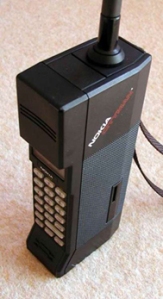 Looks so familiar, isn’t it? Mobira Cityman was designed to work on NMT networks and was instrumental in bringing global image for Nokia-Mobira division. Two years later, Nokia changes the name of its mobility division to Nokia Mobile Phones. Surge in Television sales Yes, during the late 80s, Nokia surged up to 3rd place in European television sales. When Jorma Ollilla took in charge of Nokia as CEO, in 1992, he sold off non-telecommunication divisions to focus completely on mobility and telecommunications. This was a risky gamble and it paid off spectacularly. July 1 1992, first GSM phone call In the year 1987, representatives from 13 European countries decided to create a standardized cellular telephone system across Europe and in 1990, the initial draft of GSM specification was published. Nokia Siemens Networks (NSN) built the first GSM network in the year 1992 while the first GSM phone call was made by Hari Holkeri, the then Prime Minister of Finland, to Kaarina Suonio. The first GSM handset released by Nokia was 1011 on 10-Nov-1992 and this is how it looked like:
Looks so familiar, isn’t it? Mobira Cityman was designed to work on NMT networks and was instrumental in bringing global image for Nokia-Mobira division. Two years later, Nokia changes the name of its mobility division to Nokia Mobile Phones. Surge in Television sales Yes, during the late 80s, Nokia surged up to 3rd place in European television sales. When Jorma Ollilla took in charge of Nokia as CEO, in 1992, he sold off non-telecommunication divisions to focus completely on mobility and telecommunications. This was a risky gamble and it paid off spectacularly. July 1 1992, first GSM phone call In the year 1987, representatives from 13 European countries decided to create a standardized cellular telephone system across Europe and in 1990, the initial draft of GSM specification was published. Nokia Siemens Networks (NSN) built the first GSM network in the year 1992 while the first GSM phone call was made by Hari Holkeri, the then Prime Minister of Finland, to Kaarina Suonio. The first GSM handset released by Nokia was 1011 on 10-Nov-1992 and this is how it looked like:  Also known as Mobira Cityman 2000, this phone was 45mm thick, had a monochrome display and could store 99 contact numbers. Connecting People In the year 1993, Nokia changed their logo to what it is now and added the caption “Connecting People”. Nokia Tune and world’s first satellite call In the year 1994, Nokia released the superhit Nokia tune. This tune was based on guitar work Gran Vals (by Francisco Tarrega, Spanish musician). The phone that first featured this tune was the 2100. Due to the significantly lower price when compared to earlier devices, the 2100 series turned out to be a super hit among consumers. The initial target was to sell 400,000 2100 handsets but they ended up selling more than 20 million handsets.
Also known as Mobira Cityman 2000, this phone was 45mm thick, had a monochrome display and could store 99 contact numbers. Connecting People In the year 1993, Nokia changed their logo to what it is now and added the caption “Connecting People”. Nokia Tune and world’s first satellite call In the year 1994, Nokia released the superhit Nokia tune. This tune was based on guitar work Gran Vals (by Francisco Tarrega, Spanish musician). The phone that first featured this tune was the 2100. Due to the significantly lower price when compared to earlier devices, the 2100 series turned out to be a super hit among consumers. The initial target was to sell 400,000 2100 handsets but they ended up selling more than 20 million handsets.  During the same year, world’s first satellite call was made using Nokia’s GSM handset. Communicator is born Nokia gave the world, the first communicator (Phone, Fax and PDA) in the year 1996. Shown in the picture below is the Nokia Communicator 9000 and the Nokia E7 (released in the year 2010)
During the same year, world’s first satellite call was made using Nokia’s GSM handset. Communicator is born Nokia gave the world, the first communicator (Phone, Fax and PDA) in the year 1996. Shown in the picture below is the Nokia Communicator 9000 and the Nokia E7 (released in the year 2010)  The Snake game A year later, in 1997, Nokia 6110 grabbed the honour to become the first handset to feature the now classic game famously known as Nokia Snake Game. It is said that this game was installed on 350 million handsets till now. The birth of Symbian The year 1998 saw the birth of one of the most successful mobile Operating Systems in the world, Symbian. Symbian Limited was established on 24 June 1998 as a joint venture of Psion, Ericsson, Nokia and Motorola (yes, Motorola was part of Symbian). It was Psion’s EPOC OS (meant for PDAs) that was renamed as Symbian OS. The first phone based on the new Symbian OS was Nokia 9210 communicator, in the year 2001. Few years later, in 2008, Nokia acquired Symbian and in the year 2011, after seeing the heavy slump of Symbian powered devices, Nokia outsourced Symbian development to Accenture while they moved to Windows Phone OS. All hail the king Thanks to the explosive growth of GSM standard and Nokia’s relentless work in this area and decision to focus only on telecommunications, in the year 1998, Nokia became world’s largest mobile phone manufacturer, which it still holds and the rest is history. This brings to the end, well almost to the end. Here are few more significant milestones:
The Snake game A year later, in 1997, Nokia 6110 grabbed the honour to become the first handset to feature the now classic game famously known as Nokia Snake Game. It is said that this game was installed on 350 million handsets till now. The birth of Symbian The year 1998 saw the birth of one of the most successful mobile Operating Systems in the world, Symbian. Symbian Limited was established on 24 June 1998 as a joint venture of Psion, Ericsson, Nokia and Motorola (yes, Motorola was part of Symbian). It was Psion’s EPOC OS (meant for PDAs) that was renamed as Symbian OS. The first phone based on the new Symbian OS was Nokia 9210 communicator, in the year 2001. Few years later, in 2008, Nokia acquired Symbian and in the year 2011, after seeing the heavy slump of Symbian powered devices, Nokia outsourced Symbian development to Accenture while they moved to Windows Phone OS. All hail the king Thanks to the explosive growth of GSM standard and Nokia’s relentless work in this area and decision to focus only on telecommunications, in the year 1998, Nokia became world’s largest mobile phone manufacturer, which it still holds and the rest is history. This brings to the end, well almost to the end. Here are few more significant milestones:
- Nokia 7100, world’s first WAP handset released in 1999
- Nokia 6650, world’s first 3G handset released in the year 2002. And it’s ironic that we started using 3G almost a decade later
- Nokia N-Gage gaming smartphone and platform released in the year 2003
- N-series: Released in 2005, this lineup still considered as Nokia’s flagship.
- Nokia 1100: In the year 2005, billionth unit of this legendary phone was sold.
- Brand NSN formed in the year 2007.
- Nokia 9210 communicator is their first mobile phone with color display.
- Nokia 7650 was the first device running Symbian S60 OS and first with a camera built in.
- Nokia N8 turned out to be the best camera phone ever created and maintains the uniqueness years after its release.
- Nokia N900 and N9 stand tall with unique and mesmerizing UI.
- Nokia Booklet 3G is the first laptop/netbook they ever produced.
Partnership with Microsoft Since 2007, iOS and Android wreaked havok on Symbian OS, steadily eating into it’s marketshare and injust three years, they took most of the share from Symbian and to make matters worse, Nokia’s North American market share dropped to almost nothing. They went on experiment with ecosystems, first with Maemo, then with MeeGo. They produced two smartphones that truly stand out but erratic management resulted in them being shortlived. In the year 2010, Nokia brought in ex-Microsoft executive ‘Stephen Elop’ as their CEO and this started a new era. For the first time ever, Nokia decided to use outsider ecosystem for it’s smartphone lineup.The mix of N9’s hardware and Microsoft’s Windows Phone 7.5 resulted in this:  The first device from Nokia running Windows Phone 7.5 turned out to be a stunner. There are few hiccups and restrictions but, it is already acting as the guiding star. You can find more on this from my earlier post here. This company is struggling now. Nokia is not just trying hard to stay at the top but trying to survive but Nokia is one of the very very few companies with rich history and vast amount R&D and inventions. We sincerely hope that they come out of the slump and lead the industry forward in the coming years. And I hope that they bring out their own OS that can re-re-invent the phone.
The first device from Nokia running Windows Phone 7.5 turned out to be a stunner. There are few hiccups and restrictions but, it is already acting as the guiding star. You can find more on this from my earlier post here. This company is struggling now. Nokia is not just trying hard to stay at the top but trying to survive but Nokia is one of the very very few companies with rich history and vast amount R&D and inventions. We sincerely hope that they come out of the slump and lead the industry forward in the coming years. And I hope that they bring out their own OS that can re-re-invent the phone.

